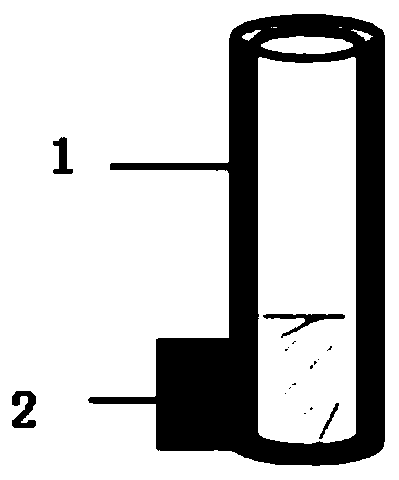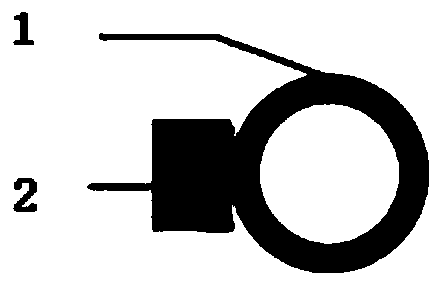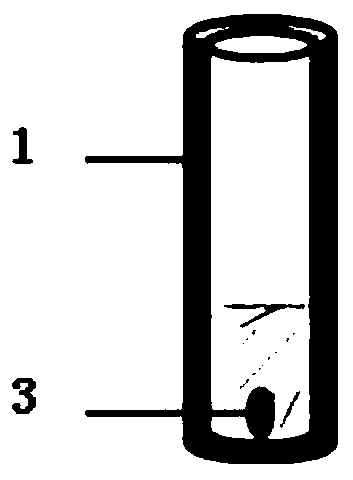Method for rapidly separating immunomagnetic beads
An immunomagnetic bead and rapid technology, applied in the field of immunological detection, can solve the problem of rapid chemiluminescence affecting the test speed, etc., and achieve the effect of shortening the time of magnetic separation and cleaning, simplifying the structure and high efficiency.
- Summary
- Abstract
- Description
- Claims
- Application Information
AI Technical Summary
Problems solved by technology
Method used
Image
Examples
Embodiment 1
[0044] Acridine ester double monoclonal antibody sandwich chemiluminescence detection, the materials used are: (1) immunomagnetic bead suspension coated with paired monoclonal antibody 1, (2) acridinium ester labeled paired monoclonal antibody 2 solution, (3) Spherical small permanent magnet, (4) exciter solution.
[0045] The details are as follows:
[0046] (1) Add 30 microliters of the serum sample to be tested (or antigen standard 0.01-100.00ng / ml), 100 microliters of immunomagnetic beads suspension coated with antibody 1, and 200 microliters of acridinium ester-labeled monoclonal antibody 2 solution Incubate at 37°C for 3 minutes in a reaction cup;
[0047] (2) Add a small permanent magnet with a diameter of 3 mm into the reaction tube for magnetic separation for 10 seconds, remove the reaction solution, and wash the magnetic particles with cleaning solution for 5 times;
[0048] (3) Add the stimulus solution (first add 100 microliters of 0.1 mol / L HNO 3 +0.1%H 2 o 2...
Embodiment 2
[0051] Alkaline phosphatase competitive chemiluminescence detection, the materials used are: (1) immunomagnetic bead suspension coated with antigen-specific reactive monoclonal antibody, (2) antigen solution labeled with alkaline phosphatase, (3) Spherical small permanent magnet, (4) luminescent substrate solution.
[0052] The details are as follows:
[0053] (1) Add 30 microliters of the serum sample to be tested (or antigen standard 0.01-100.00ng / ml), 100 microliters of antibody-coated immunomagnetic bead suspension, and 200 microliters of alkaline phosphatase-labeled antigen solution to the reaction Incubate at 37°C for 3 minutes;
[0054] (2) Add a small permanent magnet with a diameter of 3 mm into the reaction tube for magnetic separation for 10 seconds, remove the reaction solution, and wash the magnetic particles with cleaning solution for 5 times;
[0055] (3) Add 150 microliters of luminescence substrate solution (AMPPD-enhancer solution) to carry out luminescence...
PUM
| Property | Measurement | Unit |
|---|---|---|
| diameter | aaaaa | aaaaa |
Abstract
Description
Claims
Application Information
 Login to View More
Login to View More - R&D
- Intellectual Property
- Life Sciences
- Materials
- Tech Scout
- Unparalleled Data Quality
- Higher Quality Content
- 60% Fewer Hallucinations
Browse by: Latest US Patents, China's latest patents, Technical Efficacy Thesaurus, Application Domain, Technology Topic, Popular Technical Reports.
© 2025 PatSnap. All rights reserved.Legal|Privacy policy|Modern Slavery Act Transparency Statement|Sitemap|About US| Contact US: help@patsnap.com



